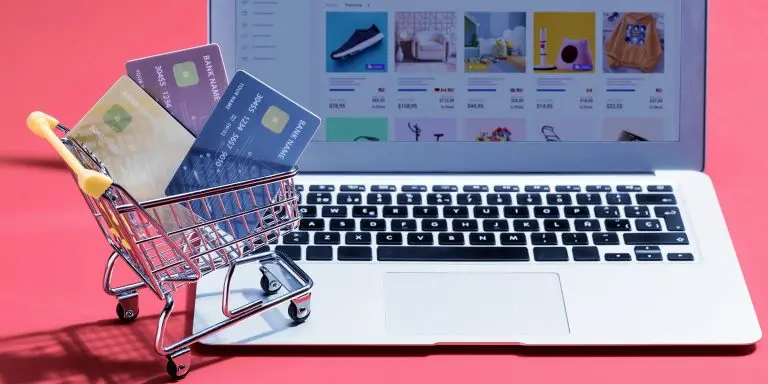Imagine launching a dropshipping business, dreaming of sky-high profits with minimal effort. Now, picture this dream crashing down due to unforeseen risks.
Over 90% of dropshipping businesses crash and burn within their first months. Of course, there are many reasons why that happens, but most have to do with the fact that they don’t actually know the risks and the dark side behind taking this road.
This next video gets into the dark side of dropshipping, unveiling its hidden risks and how you can navigate its wild waters.
Now, if you prefer reading, then this blog is for you.
Table of Contents
The unseen risks of dropshipping
Even though dropshipping promises wealth and freedom, it also hides huge risks like account suspensions by major advertising platforms and payment gateways, frozen funds, and the relentless tide of fraudulent transactions and copyright infringement claims.
We’ll take these hidden risks one by one and discover what you need to avoid to protect your business and maximize your chances of success.
Ad account suspension
Imagine you wake up to the cold reality that your ad account, this lifeline of your dropshipping business, has been suspended. Overnight, your primary source of traffic and sales has disappeared. This is not just a bad dream; it’s a stark reality for many in the dropshipping world.
The reasons? They range from unintentional policy violations to complex algorithm changes. So, make sure you research the policy of these advertising platforms before publishing your ads and keep an eye on the latest updates.
Payment gateway suspension
This can be another blow to your dropshipping business: your payment gateway, the very heartbeat of your financial transactions, is suddenly suspended. Stripe, PayPal, Shopify Payments—whichever is your lifeline, can halt your revenue stream and cripple your business. This isn’t just a hiccup; it’s a full-blown operational crisis.
Why could this happen? It could be anything from compliance issues to disputes, so tread carefully with everything related to your payments, and make sure you comply with the payment gateway’s latest policy.
Frozen funds
Now, of course, just like in a cascade of dominos, the suspension of your payment processing account freezes your funds too. Those numbers in your account, representing hard-earned revenue, are now just figures you can’t touch, potentially locked away for months. This isn’t just inconvenient; it’s financially paralyzing.
Paying your suppliers and even accessing your digital wallet can now become impossible. The digital realm, once your playground, now feels more like a prison.
Chargebacks and fraudulent transactions
Fraudulent transactions and chargebacks are other dangerous waters you need to avoid. Each one is a strike against your financial health and your brand’s reputation.
In a business model where profit margins are often razor-thin, especially at the beginning, these fraudulent activities are not only setbacks, they’re existential threats. Why? Well, they drain your resources, both monetary and emotional, and damage your reputation.
Copyright infringement claims
In your journey to find the hottest products, you can step into a legal minefield. Selling products that are too similar to known brands can unleash many copyright or counterfeit claims.
This could lead to huge consequences, such as legal actions, hefty penalties, and the potential loss of your inventory. It’s not just about losing your products, it’s about losing your ability to operate, to sell, and in some cases, your freedom to do business at all.
How can you avoid all these? Well, never sell knockoff products, try finding unique products from family-owned businesses and local shops.
Supplier issues and shipping delays
Your suppliers can make or break your dropshipping business. Unexpected stock shortages, low-quality products, and sudden price hikes are just the tip of the iceberg. Add to all these shipping delays, particularly from overseas, and you’re faced with long delivery times, and unhappy customers.
That’s why 84% of ecommerce retailers say that searching for a reliable supplier is their biggest obstacle in starting a dropshipping business.
If you don’t want to fall into this trap, build strong relationships with reliable suppliers and always have a Plan B. Opt for top-tier suppliers who are close to your main location and can ship fast. Consider a reliable dropshipping platform like AppScenic, where you have backup options at your fingertips. Our platform gives you access to premium products, speedy shipping, and excellent customer support.
Here’s more on how you can find the best suppliers:
- Discover the best dropshipping apps for your ecommerce platform. For example, if you have a Shopify store, then just check on their app store what are the best-rated dropshipping apps that can integrate with your store. AppScenic, our platform is one of them.
- Check what independent suppliers are out there. Another way to find and sell great products is through independent suppliers. This also means you can have your own brand store and sell private-label products.
- Find an all-in-one platform for dropshipping. This platform should have it all – from great pricing plans, unique and high-quality products, top and reliable suppliers, ultra-fast delivery times to 24/7 customer support and other amazing features. AppScenic is one of these platforms.
Read more: Top 5 things to consider before getting a dropshipping supplier

Lack of research
Research is the backbone of any successful dropshipping business. And jumping in without research is like sailing without a compass. Many aspiring entrepreneurs overlook this crucial step, setting themselves up for failure.
If you don’t want to be one of them, then here’s what you need to know – research is crucial, not just at the beginning, but at every step of the journey. So, take the time to understand how dropshipping works, the right steps to follow, and what products resonate with your target audience.
Before actually starting dropshipping, make sure you know all about the following:
- Dropshipping: what it is and how does it work
- The steps to follow to start dropshipping
- The type of products that work in the area you want to dropship
- What’s trending in your country
- Your target audience
- The ecommerce platforms that are right for your store
- Independent supplier or dropshipping platform?
We recommend starting with our Dropshipping Academy Course. We will show you how to start a dropshipping business in less than 30 days from anywhere in the world, even if you have no prior experience. You will also get to only learn the most efficient strategies for beginners.
Some other online resources that can help you get started:
- Dropshipping blogs – dodropshipping.com, shopify.com/blog, torchbankz.com, etc.
- Dropshipping free courses – check this article for a list of the best.
- Reddit communities – Talk dropship with fellow redditors or this other dropshipping community.
Customer service overload
In the world of dropshipping, your brand is only as good as your last customer’s experience. Unresponsive customer service can lead to negative reviews, chargebacks, and a tarnished reputation. A massive amount of inquiries, complaints, and returns can become overwhelming especially if you’re operating solo or without proper systems in place.

Investing in great customer service isn’t optional; it’s a must. So, pay attention to your customers’ reviews and needs at all times. When and if a customer reaches up to you or returns a product, make sure your customer service is ready to handle their requests.
Ineffective marketing strategy
So, you’ve got fantastic products and reliable suppliers? If you can’t reach the right audience, it’s all for nothing. The right marketing strategy is the key and your guiding light! For example, just picking the wrong advertising channel could kill your entire business. Not every advertising channel is good for every niche or product type. We talk more about that in our dropshipping course too.
Now, we’ve also seen so many beginners thinking that they can start selling dropshipping with no money invested in marketing. That’s actually a pretty popular trend this year. There are so many dropshipping gurus promising beginners they can get rich overnight by just spamming social media channels, like TikTok or Facebook, with their product videos.
If you want the truth about dropshipping with no money and zero investment in marketing, here’s a great video on this topic.
For the right marketing strategy, you need to invest some money! Start by conducting in-detail market research to understand your customers’ preferences and interests. The next step is to perform keyword research and optimize your online store for Google – this is the most basic way you can start gaining organic traffic and then some customers.
Then open 1 or 2 social media pages and build up your audience on these pages by engaging with your audience. At the moment, the best social media channels for dropshipping are Facebook and Instagram.
Once you create a user-friendly website, leverage compelling images and videos, and promote your store on platforms like Google, Facebook, and Instagram. Remember, advertising is crucial for your business’s growth.
For example, Facebook works best for ads of cheaper products in the $10-100 range, Google Ads works best for medium to high-priced items above $100, and TikTok is the fastest-growing advertising platform for the dropshipping business model.
And, if you are new to all of these, here are a few free advertising courses you can start with:
- Google Ads courses: Coursera and Google Skill Shop
- Facebook Ads courses: Coursera and Facebook
Cash flow problems
Fluctuating sales volumes and unexpected expenses can strain your finances, making it challenging to cover operational costs and invest in growth. Every penny counts, and missteps can be costly. Plan your budget wisely and allocate resources where they can give the best results.
Whether it’s investing in high-performing marketing channels that drive sales, optimizing your website for better conversion rates, or outsourcing customer service to enhance customer loyalty, each decision must be guided by a potential return on investment. Another topic we focus on in our dropshipping course is how to estimate and plan your budget so you have enough fuel to run your business for at least 3 to 6 months.
Realistically, you’ll need a budget of $1500-2500 to cover setting up your online store, choosing quality products and the right platform, and investing in advertising. This is a good starting point, giving you room to test products and improve your chances of success.
Read more: The true cost of dropshipping
Here is an example of how much it can cost to start a dropshipping business in the USA:
- LLC company to incorporate: $600 one-time fee
- Domain: $14 per year
- Ecommerce platform (such as Shopify): $29 per month (plus the 2% transaction fee)
- Dropshipping platform (such as AppScenic): $24 per month
- Sampling products: $200
- Marketing (such as advertising on Google and Facebook): $1,000 per month
- Other apps: $29 per month
Technical issues
Technical glitches like website crashes and platform outages can disrupt your operations and damage your online presence. In this digital arena, only the strongest and most innovative survive.
Choose the right web hosting or e-commerce platform for your dropshipping store, such as Shopify and WooCommerce, as these are the most popular e-commerce platforms for dropshipping. Also, speed and uptime are crucial for your e-commerce store, so make sure you opt for a hosting provider that offers loading times of under 2 seconds and has at least 99.5% uptime.
Intense competition and market saturation
Intense competition in the dropshipping market can make it difficult to stand out and attract customers, especially without a unique selling proposition. Research is key here too. Discover what’s trending, what’s missing, and test multiple niches before choosing the right one. Find a unique value proposition that makes you stand out from the crowd, and don’t be afraid to explore new possibilities.
Read more: Top Niches Insights
If everyone is advertising on the same channels, promoting the same products, and using the same type of content and ads, well that won’t generate too many sales. That’s why you need to stand out, find the gaps in the market, and promote your business where there is already a demand for your products. Don’t waste your marketing budget on months of testing and guessing what works and what the potential customer wants to buy.
Legal compliance
Then there’s the legal landscape. Ignorance or oversight of legal requirements, such as tax regulations, privacy laws, and product safety standards, can expose you to fines, lawsuits, and reputational damage.
That’s why, before starting any business, you need to do your research and make sure you are compliant and follow ethical business practices for your region. This way you can avoid penalties and build a sustainable business.
In most countries, like the USA or UK, you have to register your company and pay taxes. So, make sure you are compliant and follow ethical business practices for your region. This way you can avoid penalties and build a sustainable business.
Most dropshipping choose to register their company as a sole proprietorship (also known as a sole trader in the UK) or LLC (or an LTD in the UK).
Read this article on how can you setup a dropshipping business in the USA if you want to dropship in the USA as a non-citizen.
Here’s our guide on how to start a dropshipping business in the UK.

Conclusion
So, you see, dropshipping is not an easy journey, it’s a battlefield. And only the informed, the prepared, and the resilient survive. That’s why it’s essential to navigate its dark side wisely. Now that you know the hidden risks of dropshipping and how to avoid them, you’re one step ahead of the pack.
Remember, research is your ally, partner with reliable suppliers and platforms, implement a smart marketing strategy, plan your budget wisely, and prioritize fast shipping. In the world of e-commerce, knowledge is not just power; it’s profit.











